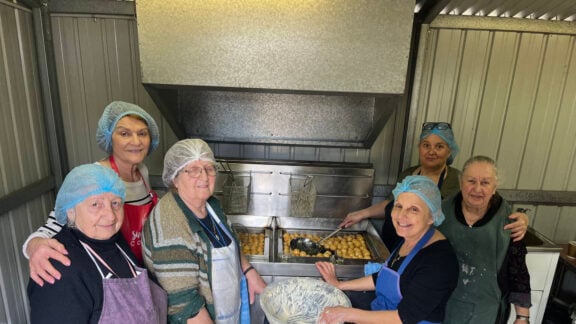The simple chestnut (κάστανο), a frequently used ingredient in Greek cooking, is not always the first choice for many modern cooks. However, a close look into the history and uses of the chestnut shows that not only does it have a proud history rooted in Greek culture, but it also can be used in more ways than many give it credit for.
The Greek word for the European species of the chestnut is shared by many different European cultures, with the Spanish calling them castana, Portuguese castanha and Dutch kastanje. These words, as well as many others from around Europe, came from the Latin word castanea, which was based on the Ancient Greek word kastanon (κάστανον). Indeed, the chestnut tree (castanea sativa) itself was introduced to Europe through Greece.
The Greek origin of the chestnut has not always been accepted, particularly in species such as the Horse Chestnut. This was thought to be of Asian origin until the English gentleman John Hawkins found it growing in, firstly, the Pindus Mountains in Greece, and then in the Epirus region at the turn of the 19th century.
Most of the early writings about the chestnut came from the Ancient Greeks. The chestnut tree was seen as the tree of Zeus in these times, an idea that was supported by the fact that hundreds of the trees surrounded Mount Olympus. Historical records also show that Alexander the Great’s army planted chestnut trees while travelling across Europe during wartime, and this helped the Greek army survive its journey home from Asia Minor in 401-399 BC. Also, in the writings of Ancient Greeks Dioscorides and Galen, comments can be found about the flatulence caused by chestnuts, as well as their medicinal uses.
The proud history of chestnuts in Greece is actually celebrated every year in October, with villages such as Kastanitsa (which takes its name from the chestnut tree that grows plentifully around the region), Paleochori and Agiasos, on the island of Lesbos holding annual festivals.
These celebrations focus on cooking with chestnuts and traditional Greek music and dancing.
The culinary uses of the chestnut are varied, and have been used for thousands of years in many parts of the world. In Greece, chestnuts were often used in place of cereals, which would not often grow easily in mountainous regions. In modern Greek cooking, they are used in a variety of ways, including in stuffing for meats, sweets and an ingredient in rice dishes.
One of the most popular Greek dishes is pork or beef boiled in a tomato sauce with chestnuts.
Of course, a favourite are the traditional roast chestnuts, which require special preparation so as not to cause the nut to swell and possibly explode. In this method of cooking, the chestnut is not peeled, but its skin is cut once lengthwise or in a cross. The oven is preheated to 200 degrees Celsius and the chestnuts are roasted for 10-20 minutes.
Another method of cooking involves boiling the chestnuts in a saucepan of water for 15 minutes, then draining. Whichever way the chestnuts are prepared, the skin must be removed while still hot, as cold chestnuts are difficult to peel. Roast chestnuts made in this way are enjoyed all over the world.
Besides this form of preparation, chestnuts are often milled into flour, and used in breads, cakes, pasta, polenta and soups.
Chestnuts are often also candied or grilled, and some cultures ferment the juice to create a sugar-like substance. Also, a type of coffee that is known for its relaxing qualities is made from dried chestnuts. But it is not only the nuts that are used by humans – as the leaves of the chestnut tree are reputedly useful for lung diseases and rheumatism.
Unfortunately, the extended preparation time required to cook chestnuts has discouraged many from cooking with them nowadays. Looking more closely at newer recipes including chestnuts, however, will hopefully bring this nut back into the modern Greek Australian kitchen.








